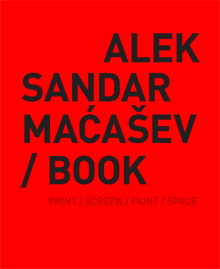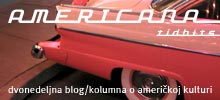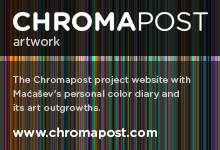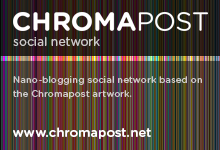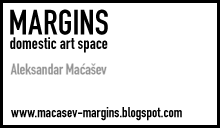Published in the Imprint Blog of Print Magazine
go to the original article >
Kraftwerk really showed you how to follow the signs, to get references, to learn your history. … Kraftwerk made having a cultural intelligence cool.
Peter Saville, Wallpaper*, October 2011

Kraftwerk’s rich and influential audio-visual body of work has received a deservedly grand treatment at New York’s MoMA entitled, “Kraftwerk - Retrospective 1 2 3 4 5 6 7 8”. During 8 consecutive evenings (10-17 April) the avant-garde German group is presenting highlights from its catalog with the focus on one album per show. Kraftwerk could never have been called a band by usual standards, more like an art collective making music. Along the same lines, the MoMA shows in the Marron Atrium aren’t quite concerts, but intimate 2 hour long performance pieces for those lucky enough to get the tickets. To their big credit, even the latest gimmickry fad of 3D is being used true to its nature, by creating a live audio pop-up picture book not unlike the 3D book they released recently.
Their visual output (video, performance, installation, and mechanical sculptures) is inseparable from their music, creating a total work of art. Every record and almost every track is complemented by visuals to the point that the two are interchangeable. When I see a red shirt with a black tie now, I think of “Robots”, and when I hear "Autobahn" my mind takes me immediately to the German countryside postcard. All the record covers and music videos are carefully crafted to reflect the main concept behind the music. The graphic elements for their live show visuals have had many iterations over time and have been filtered down into highly recognizable icons, including the image of the “4 figures” on stage. Kraftwerk improvise freely with the signs, making their performances familiar, but always innovative.
Ralf Hütter and Florian Schneider started collaborating under the name Organisation amid the flourishing German krautrock and experimental electronic music scene of the late '60s. The scene tried to break from German tradition and its recent past to create something completely new and as divergent as possible from American and British popular music. Countering that stream, Hütter and Schneider wanted to embrace the present, and tried to create a new image of Germany. Their first and only album under the name Organisation, ‘Tone Float’, featured a sort of a mystical profile on its cover that was common to the scene. The design credit was cryptically listed as "Comus," but next to it there was an image of a traffic cone in the deadpan manner of Duchamp or Warhol. That little pop-art image was fully blown up on the cover of Kraftwerk’s first and self-titled album in 1970, and repeated on their second self-titled album in a green variant. Apart from their fascination with technology and innovation, the bluntness of the everyday, simplicity, irony and subtle humor would become staples of their work.
In 1973 Emil Schult, a musician and artist who would contribute to almost all their album cover designs, joined the group. That year’s album "Ralf und Florian" featured Hütter and Schneider on the cover looking more like scientists than musicians. The overall feel of the photography was that of Gilbert and George. The sleeve was stamped with the orange traffic cone that had already become associated with Kraftwerk. Inside Shult added a series of comic-book illustrations for each track inside the sleeve.
The first album in their recently remastered collection "Catalogue 1 2 3 4 5 6 7 8," "Autobahn" from 1974, has the fully developed Kraftwerk visual language we know today. It shows a picture perfect highway winding through the German landscape, executed in the manner of a 1950s postcard (Die Sonne scheint mit Glitzerstrahl—The sun is shining with glittering rays). A little blue-white icon (highway traffic sign) would soon occupy the entire front cover in foreign editions and re-mastered releases. Pictures of the Mercedes dashboard and a Volkswagen ‘beetle’ whizzing down the Autobahn completes the image of the new progressive Germany.
"Radio-Activity" from 1975 plays with both radioactivity and radio activity. In addition to dark airbrush illustrations of antennas, transmitters and waves that can bring news or death on the inside sleeve, the front cover shows a stylized Volksempfänger, the “people’s radio” that was once used in Goebbels’ propaganda machinery. Kraftwerk is not particularly known for social activism, but their performances of Radio-Activity tracks warn us of the dangers of radioactivity, showing infamous disasters like Chernobyl and Hiroshima with prominent usage of the “radioactivity” symbol that also replaced Volksempfänger in the album’s reissues.
‘Trans-Europe Express" from 1977 named after the eponymous and now discontinued railway service, deals with two apparently unrelated themes: European integration and the chasm between reality and its image. Prophetically, the stylish irony in the album became more of the troubling reality of the European dream 35 years later. The cover photo by Maurice Seymour shows the quartet impersonally posed as showroom dummies. As a visual representation, it served as a point of departure from the human and physical towards the mechanical and simulated.
Switching from mannequins to robots seems like a logical step. The record cover of "Man Machine" from 1978 brought us the most iconic Kraftwerk image, with band members developing further the Beatles’ “rule of four”, sporting uniforms of red shirts and black ties in a nod to constructivism. The usual nondescript suits were replaced by haute couture uniforms that would influence so many up and coming new wave artists. The flipside is a fully credited quotation from El Lissitzky’s ‘From Two Quadrants’. Following the pattern of reducing the iconography to simple symbols, recent covers and live acts prominently use the iconic stencil type of Karl Klefisch.
By 1981 electronic music gained much momentum and massively infiltrated pop music. Time finally caught up with Kraftwerk and the quartet depersonalized themselves even more by showing up only as images on a computer screen on the cover of their "Computer World" release. Although conceptually and musically ahead of their time, many think of Kraftwerk as a futuristic band despite a thematic orientation that is more towards the past and the present. This was the first album peeking into the computer-dominated future with ASCII graphics and pixelated type glowing from a black background. A similar approach marked the 1985 release of ‘Electric Café’, later renamed, “Techno Pop.” Rebecca Allen and a team from the New York Institute of Technology transformed the band members into cutting edge computer rendered and animated characters whose wire framing is reflected in the design of the recent Kraftwerk stage costumes. ‘The Mix’ from 1991 brought bodies back to the physical world but as mechanical robots. Almost 20 years later, catching up with highly digitized times, the cover of their "Catalogue 1 2 3 4 5 6 7 8" shows only four 8x12 pixels icons. Briefly in 2003 the cover took us on a nostalgic flashback to mechanical ‘Autobahn’ days with ‘Tour de France’.
Two years ago in the same Marron atrium Marina Abramović was performing ‘The Artist is Present’ piece. She is also actively developing a method of preserving performance pieces by training young artists who can carry on when she is gone. A similar approach can be sensed in the Kraftwerk’s practice. Only one original member, Ralf Hütter, is still in the line-up, and younger forces have been introduced to carry the torch. Kraftwerk has turned into a self-sustained and auto-replicating machine that will continue to produce audio-visual spectacle long after the original carbon-based bodies are decomposed.
Flickr photo set from the 'Techno Pop' Kraftwerk show in MoMA, 15 April 2012.
(photo: A. M.)
go to the original article >
Kraftwerk really showed you how to follow the signs, to get references, to learn your history. … Kraftwerk made having a cultural intelligence cool.
Peter Saville, Wallpaper*, October 2011

Kraftwerk’s rich and influential audio-visual body of work has received a deservedly grand treatment at New York’s MoMA entitled, “Kraftwerk - Retrospective 1 2 3 4 5 6 7 8”. During 8 consecutive evenings (10-17 April) the avant-garde German group is presenting highlights from its catalog with the focus on one album per show. Kraftwerk could never have been called a band by usual standards, more like an art collective making music. Along the same lines, the MoMA shows in the Marron Atrium aren’t quite concerts, but intimate 2 hour long performance pieces for those lucky enough to get the tickets. To their big credit, even the latest gimmickry fad of 3D is being used true to its nature, by creating a live audio pop-up picture book not unlike the 3D book they released recently.
Their visual output (video, performance, installation, and mechanical sculptures) is inseparable from their music, creating a total work of art. Every record and almost every track is complemented by visuals to the point that the two are interchangeable. When I see a red shirt with a black tie now, I think of “Robots”, and when I hear "Autobahn" my mind takes me immediately to the German countryside postcard. All the record covers and music videos are carefully crafted to reflect the main concept behind the music. The graphic elements for their live show visuals have had many iterations over time and have been filtered down into highly recognizable icons, including the image of the “4 figures” on stage. Kraftwerk improvise freely with the signs, making their performances familiar, but always innovative.
Ralf Hütter and Florian Schneider started collaborating under the name Organisation amid the flourishing German krautrock and experimental electronic music scene of the late '60s. The scene tried to break from German tradition and its recent past to create something completely new and as divergent as possible from American and British popular music. Countering that stream, Hütter and Schneider wanted to embrace the present, and tried to create a new image of Germany. Their first and only album under the name Organisation, ‘Tone Float’, featured a sort of a mystical profile on its cover that was common to the scene. The design credit was cryptically listed as "Comus," but next to it there was an image of a traffic cone in the deadpan manner of Duchamp or Warhol. That little pop-art image was fully blown up on the cover of Kraftwerk’s first and self-titled album in 1970, and repeated on their second self-titled album in a green variant. Apart from their fascination with technology and innovation, the bluntness of the everyday, simplicity, irony and subtle humor would become staples of their work.
In 1973 Emil Schult, a musician and artist who would contribute to almost all their album cover designs, joined the group. That year’s album "Ralf und Florian" featured Hütter and Schneider on the cover looking more like scientists than musicians. The overall feel of the photography was that of Gilbert and George. The sleeve was stamped with the orange traffic cone that had already become associated with Kraftwerk. Inside Shult added a series of comic-book illustrations for each track inside the sleeve.
The first album in their recently remastered collection "Catalogue 1 2 3 4 5 6 7 8," "Autobahn" from 1974, has the fully developed Kraftwerk visual language we know today. It shows a picture perfect highway winding through the German landscape, executed in the manner of a 1950s postcard (Die Sonne scheint mit Glitzerstrahl—The sun is shining with glittering rays). A little blue-white icon (highway traffic sign) would soon occupy the entire front cover in foreign editions and re-mastered releases. Pictures of the Mercedes dashboard and a Volkswagen ‘beetle’ whizzing down the Autobahn completes the image of the new progressive Germany.
"Radio-Activity" from 1975 plays with both radioactivity and radio activity. In addition to dark airbrush illustrations of antennas, transmitters and waves that can bring news or death on the inside sleeve, the front cover shows a stylized Volksempfänger, the “people’s radio” that was once used in Goebbels’ propaganda machinery. Kraftwerk is not particularly known for social activism, but their performances of Radio-Activity tracks warn us of the dangers of radioactivity, showing infamous disasters like Chernobyl and Hiroshima with prominent usage of the “radioactivity” symbol that also replaced Volksempfänger in the album’s reissues.
‘Trans-Europe Express" from 1977 named after the eponymous and now discontinued railway service, deals with two apparently unrelated themes: European integration and the chasm between reality and its image. Prophetically, the stylish irony in the album became more of the troubling reality of the European dream 35 years later. The cover photo by Maurice Seymour shows the quartet impersonally posed as showroom dummies. As a visual representation, it served as a point of departure from the human and physical towards the mechanical and simulated.
Switching from mannequins to robots seems like a logical step. The record cover of "Man Machine" from 1978 brought us the most iconic Kraftwerk image, with band members developing further the Beatles’ “rule of four”, sporting uniforms of red shirts and black ties in a nod to constructivism. The usual nondescript suits were replaced by haute couture uniforms that would influence so many up and coming new wave artists. The flipside is a fully credited quotation from El Lissitzky’s ‘From Two Quadrants’. Following the pattern of reducing the iconography to simple symbols, recent covers and live acts prominently use the iconic stencil type of Karl Klefisch.
By 1981 electronic music gained much momentum and massively infiltrated pop music. Time finally caught up with Kraftwerk and the quartet depersonalized themselves even more by showing up only as images on a computer screen on the cover of their "Computer World" release. Although conceptually and musically ahead of their time, many think of Kraftwerk as a futuristic band despite a thematic orientation that is more towards the past and the present. This was the first album peeking into the computer-dominated future with ASCII graphics and pixelated type glowing from a black background. A similar approach marked the 1985 release of ‘Electric Café’, later renamed, “Techno Pop.” Rebecca Allen and a team from the New York Institute of Technology transformed the band members into cutting edge computer rendered and animated characters whose wire framing is reflected in the design of the recent Kraftwerk stage costumes. ‘The Mix’ from 1991 brought bodies back to the physical world but as mechanical robots. Almost 20 years later, catching up with highly digitized times, the cover of their "Catalogue 1 2 3 4 5 6 7 8" shows only four 8x12 pixels icons. Briefly in 2003 the cover took us on a nostalgic flashback to mechanical ‘Autobahn’ days with ‘Tour de France’.
Two years ago in the same Marron atrium Marina Abramović was performing ‘The Artist is Present’ piece. She is also actively developing a method of preserving performance pieces by training young artists who can carry on when she is gone. A similar approach can be sensed in the Kraftwerk’s practice. Only one original member, Ralf Hütter, is still in the line-up, and younger forces have been introduced to carry the torch. Kraftwerk has turned into a self-sustained and auto-replicating machine that will continue to produce audio-visual spectacle long after the original carbon-based bodies are decomposed.
Flickr photo set from the 'Techno Pop' Kraftwerk show in MoMA, 15 April 2012.
(photo: A. M.)







